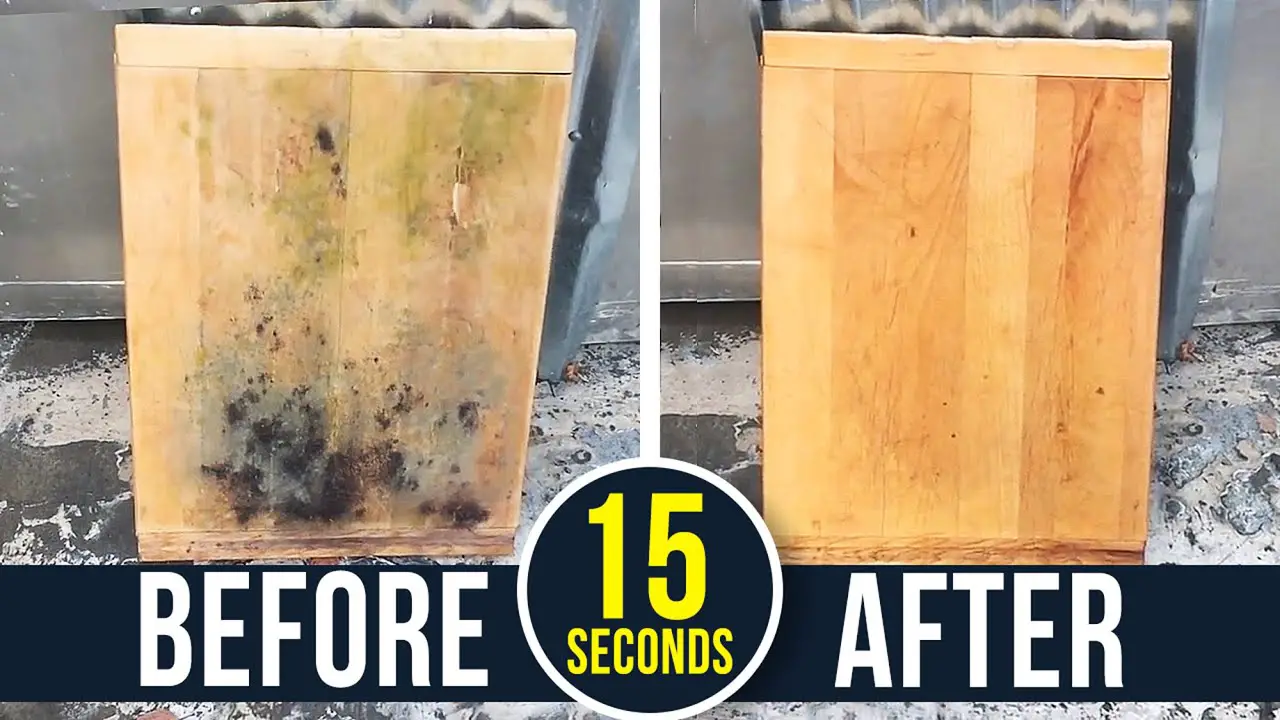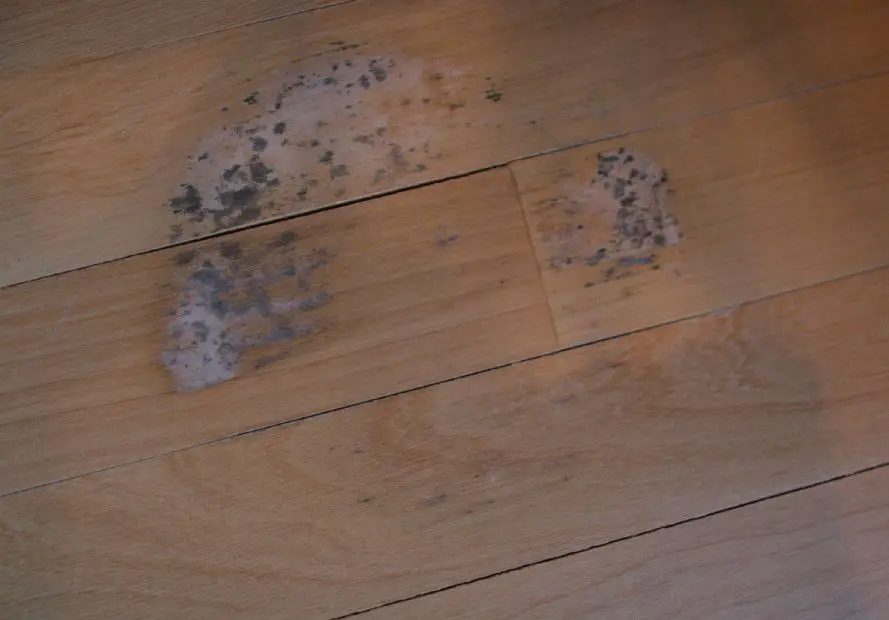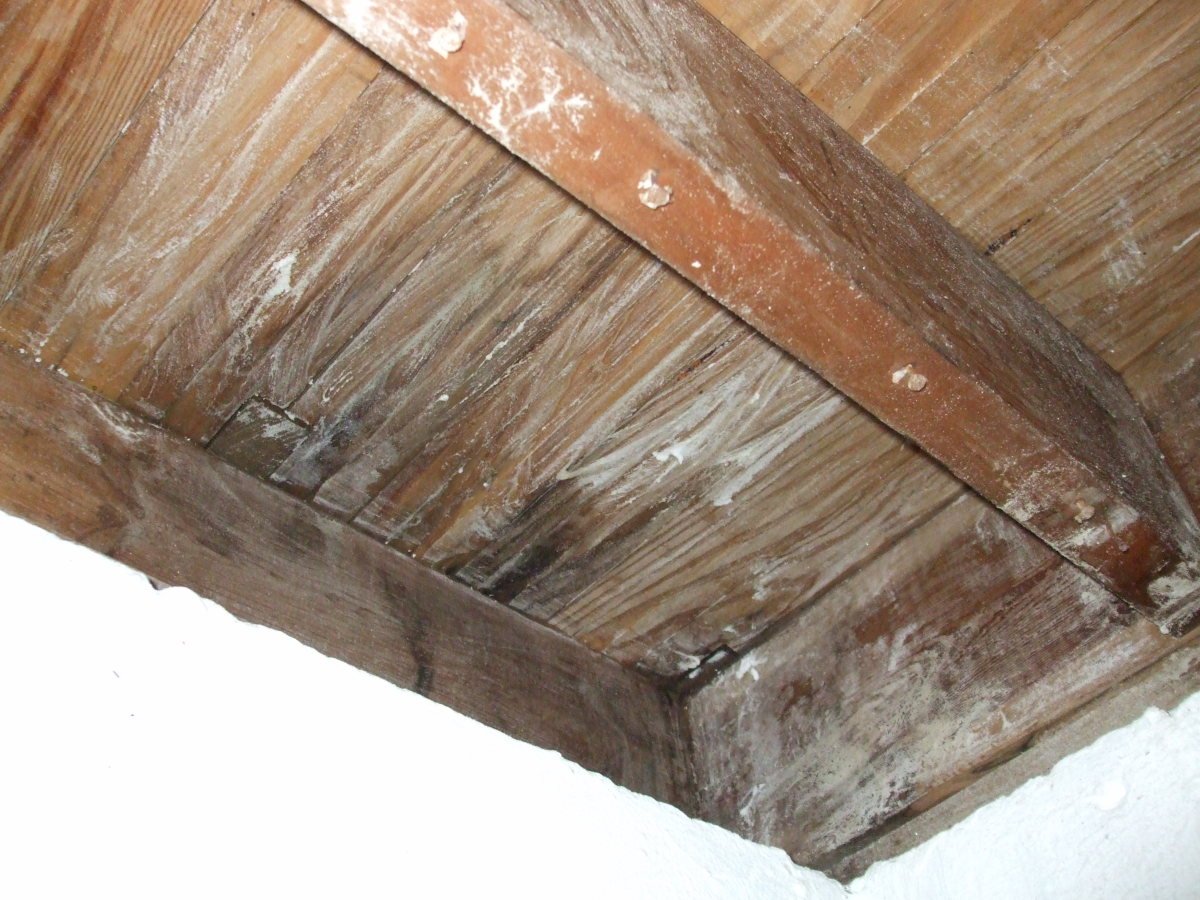Removing Black Mold Stains On Hardwood Floors
You can tell that the dark stains on your wood flooring are due to mold growth and not pet urine through the differences in odor. While pet urine has a strong, ammonia smell, mold spores carry an earthy, musty smell. Mold can trigger various health issues and should be controlled as soon as its discovered. To get rid of black mold stains on your hardwood floor, follow the procedure detailed below:
- Remove the Hardwood Planks
Whenever you notice black mold stains on your wood floor surface, its highly likely that the problem started out from the subfloor. You should, therefore, start by uninstalling the hardwood planks to access the subfloor.
Start by removing the baseboard trim and transitional trims. Then, take out the hardwood planks one by one. This takes some elbow grease, especially of the planks that were nailed down to the subfloor. However, its important if you want to completely get rid of the mold problem.
- Clean the Subfloor using Vinegar Solution
Once you access the subfloor, the mold-infested sections will be easily noticeable. Before using vinegar, wear a pair of hand gloves, as prolonged exposure to this natural acid can trigger skin irritation. Mix a cupful of distilled white vinegar with a gallon of water inside a mop bucket. Then, stir the mixture.
Tips For Preventing Mold On Wood
You can help to prevent mold affecting wood in your home by taking some proactive measures. Sadly, if the mold has penetrated too far into the wood, its most likely damaged and will need replacing.
The most effective way to prevent mold from growing on wood is to keep the wood surface dry. To do this you will need to dry wet areas as soon as possible. Its also crucial to control the humidity and moisture levels of your home keep humidity under 60 percent .
You can minimize the humidity by using a dehumidifier, as this will remove moisture from the air. You can also open the windows as often as possible to ventilate the rooms and allow fresh air to circulate.
How Do You Prevent Mold On Wood
- Keep humidity levels low. Make sure you monitor humidity with a humidity meter.
- Wipe up spills immediately.
- If you have a leak, flood, or larger scale water intrusion, dry out the area immediately. You do not want to wait more than 24 hours.
- To prevent mold on wood flooring, make sure your subfloor/foundation does not have cracks. Take the proper steps to prevent mold in your basement or crawlspace so it does not spread into your wood floor.
- Dont leave wet items on wood floors or wood furniture.
- Do not store unused wood furniture or décor in damp environments or areas prone to moisture like an outdoor shed or basement.
- Make sure that all wood is properly sealed or painted with mold resistant products . If the seal begins to wear off, reseal it as soon as possible.
- You can pretreat wood materials with Endurance BioBarrier. This product can also be safely sprayed on wood furniture. You can read more about Endurance BioBarrier here.
- Kang SM, and Morrell JJ. 2000. Fungal colonization of Douglas-fir sapwood lumber. Mycologia92:609-615
- Zabel RA, and Morrell JJ. 1992. Wood microbiology: decay and its prevention. Academic Press, San Diego, CA. 474 pages.
Read Also: How To Get Rid Of Black Mold On Bathroom Ceiling
How To Remove Black Stains From Hardwood Floors With Hydrogen Peroxide
With its antiviral, anti-fungal and antibacterial properties and its ability to bleach wood, hydrogen peroxide is an effective cleaning solution for all types of stains, including water stains.
You will need:
To remove a black stain, spray or dab 3-percent hydrogen peroxide solution only on to the areas which are stained. Check back regularly to see if the wood has bleached back to its normal color . Remove excess with a dry cloth.
A word of warning: the bleaching effect could make your wood lighter than you want if you are not careful, particularly if you get it on unstained wood. If you bleach the wood too much, you will need to sand it and then refinish it. Always use safety precautions when you use hydrogen peroxide to remove the stain.
To get rid of larger, darker marks, you can leave a hydrogen peroxide-soaked towel over the area for a few hours and then remove it and allow the wood surface or wood floor to dry.
Understand Where Mold Loves To Grow

As you already know, mold loves moisture. It will grow in any environment with a humidity level of over 55%. Homes in a humid climate or near water are more vulnerable .
Major moisture culprits are
- Wet Clothes Left Around the house
- Humidifier
- Condensation
Condensation develops on hard surfaces like windows, pipes and cold weather, so make sure to clean up these wet spots to prevent mold growth.
Recommended Reading: How To Kill Mold In A Basement
How To Get Rid Of Black Mold On Wood
Wood consists of the plant fiber cellulose, which is an optimal food source for fungi. Organic, porous materials are prone to support mold growth when a source of moisture is available.
A structure in which wood is constantly exposed to high humidity or leaking water runs a high risk of developing black mold. Take the following measures to get rid of mildew or black mold on wood while avoiding unnecessary health risks and property damage.
How To Remove Black Stains From Hardwood Floors
Black stains on hardwood floors can ruin the appearance of an otherwise beautiful hardwood floor. How can you remove these stains from your flooring, and which is the best way to go? Lets find out.
To remove the black stain on your floor, you can use hydrogen peroxide, vinegar, or baking soda. If the stain is particularly tough and you cannot get it clean, you may need to have the floor sanded, but that should be a last resort.
Don’t Miss: Cleaning Mildew Off Ceiling
Question: How Do I Clean Mold Off Of Oak Flooring That Has Not Yet Been Installed
I have recently found some used quarter sawn oak 3/4″ tongue and groove flooring for sale. Upon further inspection, many of the pieces appear to have a white powder film on the finished side of the strips and also black mold on the back sides where is it grooved and unfinished.
Of course it is being sold at an incredible price, but I am concerned about the likeliness I will not be able to clean it properly. I will add that I will be gluing it down to concrete.
Is there anything I can do myself to insure proper elimination of the mold? – Jamie Longfellow, Tallahassee, FL
Why Is My Wood Floor Turning Black
Black wood floors are caused by mold infestation and excessive moisture. Once you spot a different kind of dark spot on your wood floor, the best thing to do is get rid of it as soon as you can.
You might be surprised as to why your wood floor has a black stain on it or as to why your entire floor is suddenly turning black.
If your main question is, why is my wood floor turning black? then stay tuned. This article covers everything you need to know about dark stains on oak wood floors and how to get rid of them quickly.
Contents
Read Also: Cleaning Mold In Basements
Mold On The Underside Of Wood Flooring
One of the hardest issues to find and treat is when wood flooring mold problems are on the underside of the hardwood. Until you begin to notice musty odors or warping begins to show on the hardwood floor itself, you may not realize there is a problem. When moisture becomes trapped under a floor, the wood begins to slowly absorb it. As the boards absorb the water they expand and begin to warp. Hardwoods normally have moisture content levels of 10% or less. Once moisture content levels reach 18% or higher, there is a strong chance for mold to grow.
The only way to find a wood flooring mold problem that is under the hardwood is to physically look for it. At this point it is recommended that you contact a wood flooring installer or a mold remediation specialist. They will have the experience necessary to begin removing flooring planks without damaging them.
What Are The Signs Of Mold Under Hardwood Floors
You May Like: How To Clean Ceiling Mold Bathroom
How To Remove Mold From Wood Cabinets
First, check whether you can dismantle the affected wood. Look out for other affected areas in the cabinets. Second, ensure that you have a supply of vinegar and make sure that you have protective clothing. Clear everything in the cabinets and take it outside. Spray the vinegar onto the mold and let it soak in for an hour. Scrub the affected areas with a brush and other cleaning products to break the mold. Finish, rinse and wipe with warm water and allow the wood to dry.
Why Is My Engineered Wood Floor Turning Black

Why is my engineered wood floor turning black? Lets find out. If you spot your engineered wood floor turning black, it is usually a cause for concern. Dark marks and spots not only ruin your homes interior aesthetics but could be an indicator of greater damage.
Engineered wood floors utilize multi-ply core construction, and their surface layer is made of real wood. This makes engineered wood floors prone to water damage, just like natural hardwood floorboards.
An engineered wood floor can develop discoloration due to sap stains, iron stains, tannic acid discoloration, chemical stains, and moisture.
You can eliminate dark spots and discoloration from your floor using any of the following methods keep in mind that the cause of the discoloration determines the right method of removal.
Don’t Miss: How To Get Rid Of Black Mold In Basement
Concrobium 25326 Mold Control Spray
I find Concrobium cleaner best natural and effective way for dealing with surface mold. Even if it is not that strong as Armor mold, It doesnt contain harsh chemicals or bleach and gets job donr. Patented sollution will help you remove mold and also prevent it from regrowing. It is super easy to use as well.
This process will clear all the mold and leave an invisible shield to prevent it from coming back.
PROSabout the cleaner
What About Mold On Pre
If the exposed surface of the flooring material is moldy and if mold stains have penetrated the actual coating, for cosmetic reasons you’d need to sand through the coating and through the stain until the wood appearance is satisfactory.
Watch out: often mold-stains penetrate rather deeply into wood materials. While the stain does not itself signify an increased risk of future mold re-growth, its appearance may be unacceptable. But deep stains can require removal of quite a bit of wood surface – something that can be a problem in wood flooring, and in particular if the flooring is a Vee-grooved pre-finished product.
Read Also: Ceiling Mildew Removal
Cleaning The Surface Mold
Even when surface mold is not widespread, you want to ensure you clean all the affected areas to prevent a recurrence. It is relatively easy to remove mold from the surface. Using the spray bottle, spray the cleaner or bleach solution on the affected area. Leave it to sit for 10 minutes. You can then wipe off the mold with a rag. If there is stubborn black mold on the wood floor, you can use a firm scrubbing brush to remove it. Throw away the rag that you use.
When removing the mold, do not leave the bleach on the surface longer than necessary. It will remove the wood finish. Also, be careful when handling the solution to avoid contact from the uninfected areas.
Remove From Laminate Flooring
For laminate floors, it will need to be cared for with minimal chemical use. Chemicals can damage the laminate.
First sweep away any dirt or debris with a broom or vacuum cleaner on the laminate. Mix equal parts of vinegar, rubbing alcohol and water into a bucket.
Spray onto the laminate surface where it is showing. Scrub gently. Rinse and repeat if necessary. When done, be sure to dry the laminate surface completely.
You May Like: Remove Mold On Bathroom Ceiling
Determine How Far The Mold Has Penetrated
For building materials such as wood floors, mold has the ability to penetrate deep within the surface that extends beyond visibility. But to determine exactly how far it has spread, press into the affected area with a screwdriver. If the wood is soft and spongy, it has spread below the floorboards, which will require replacing the board itself. Follow the listed steps below to learn how to remove mold that has penetrated through wood floors.
How To Remove Mold Under Hardwood Floors
When you find any mold in your home, do not hesitate to take immediate action. First of all, you must think about what causes mold on your wood floor and figure out how you can stop it. If there is a leakage or spill in your house, make sure to fix it before proceeding with the removal. If you think not able to remove mold completely, you will have to consult a wood flooring expert who may counsel refinishing, replace the floorboards, or remove the mold.
Firstly, remove room furnishings. It would be best if you carried uncontaminated things to a mold-free area. Seal and take the furniture outside immediately. Throw away easily replaced items if they are infected with mold. Take all washable carpets and furniture in the sun and place them after the house is complete.
Open windows and doors to allow air circulation in the room. Set a fan on the window, pointing outwards that will keep well ventilations.
Next, you will pry away the baseboard wall trim in the infected area. Similarly, pull up any transitional floor trim. Remove the whole flooring in the room. Besides, if you think the mold infects only in a small area of the floor and you can patch only that area. Remove only the trim needed to access the area of the floor involved plus two feet extra. Then you might observe to remove mold properly.
You May Like: Leather Mold Cleaner
How To Clean Mold Off Wood
When attempting to locate or clean mold on wood, amateurs and professionals should both use appropriate PPE. Whether wood mold is inert, allergenic or toxigenic, be sure to wear all of the following safety equipment:
- Goggles
- Face mask
- Rubber gloves
Additional PPE and containment supplies may be needed depending on the severity of an infestation and whether the mold is toxigenic. A half- or full-face respirator, plastic sheeting and fans for creating a containment environment with negative air pressure may be advisable for cleaning fungus out of more than 10 square feet of a structure or an infestation involving a toxic species and strain of mold.
If you suspect that toxic black mold is growing on wood, make sure that any respiratory equipment you use is rated to protect the wearer from exposure to mold spores, microbial volatile organic compounds and mycotoxins. An N95 or P100 mask is an adequate base level of protection to wear while cleaning mold off of wood.
What Causes Black Stains On Wood Floors

Black stains on hardwood floors are often caused by grime and dirt, pet urine, or mold. In the case of grime and dirt, a lack of regular maintenance can contribute to the severity of the stain by allowing dust and dirt to buildup on your floor and give mold an opportunity to grow undisturbed. In most cases, the longer you leave the stain, the harder it will be to clean.
Also Check: Getting Rid Of Mold On Bathroom Ceiling
